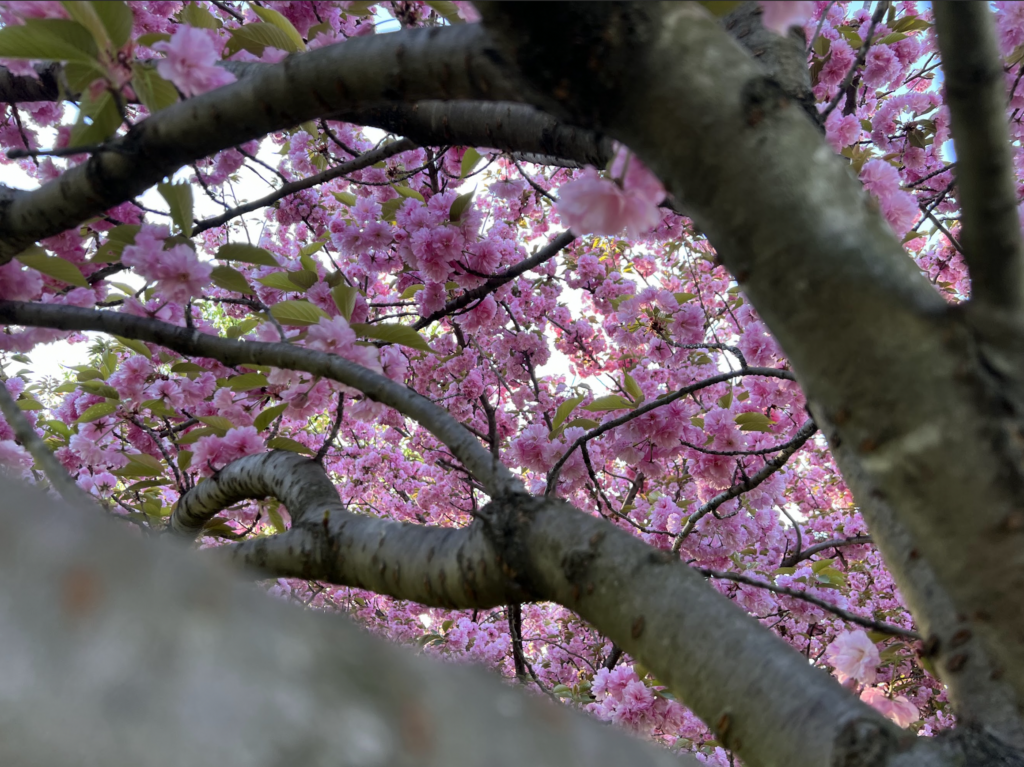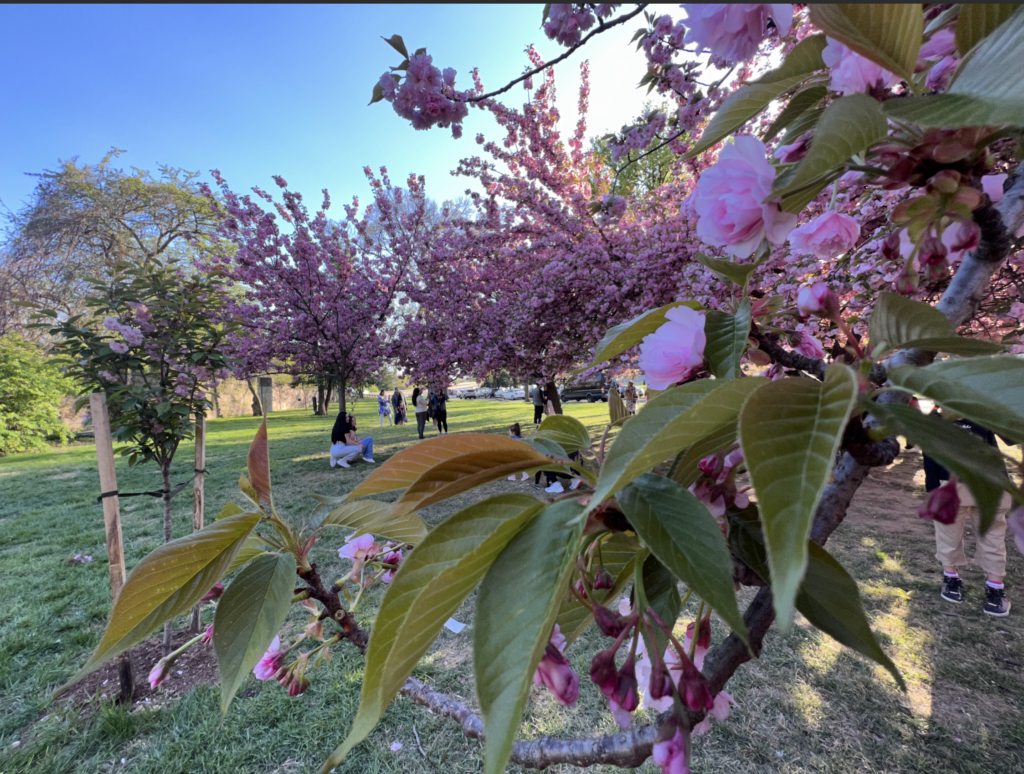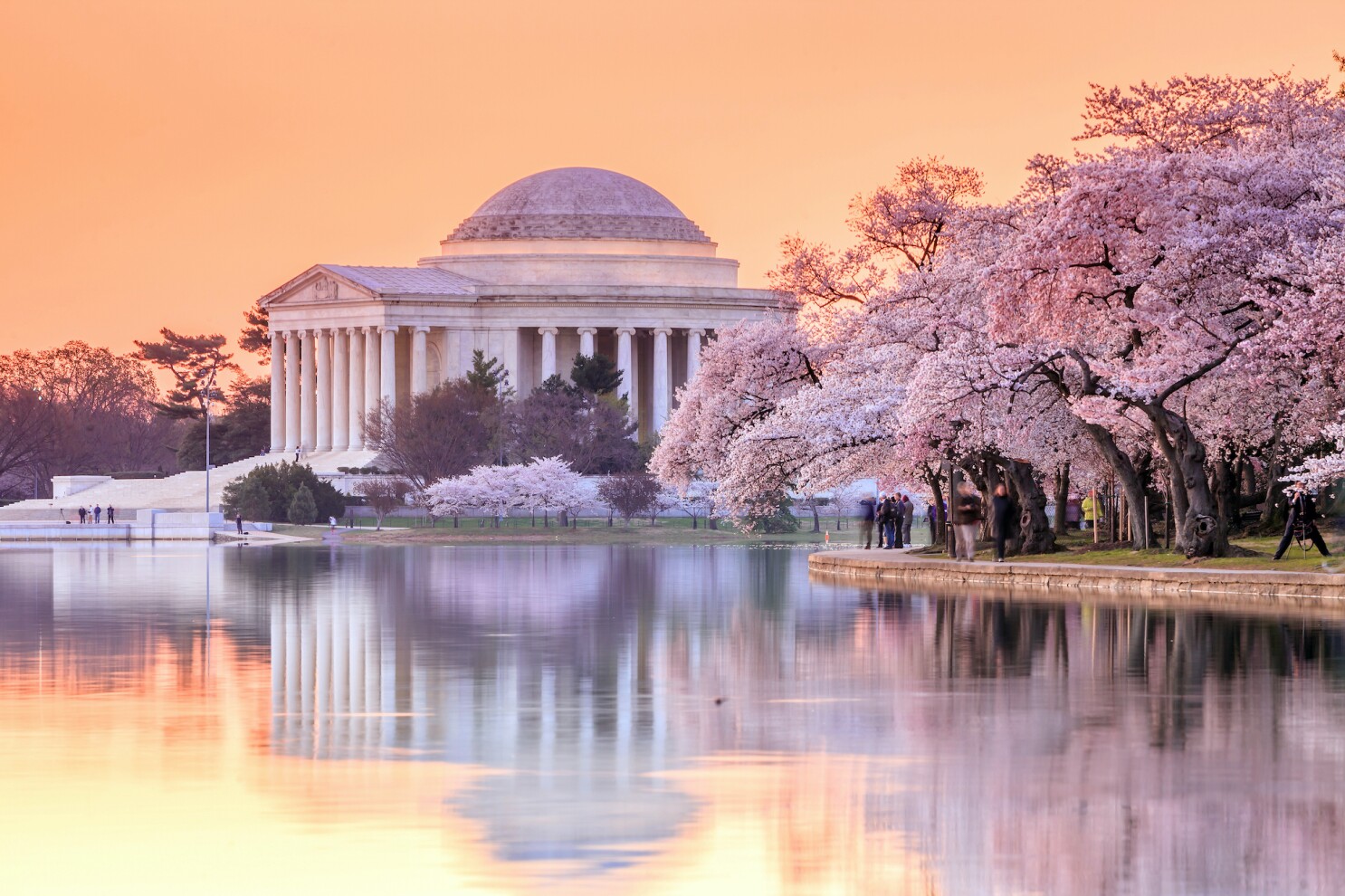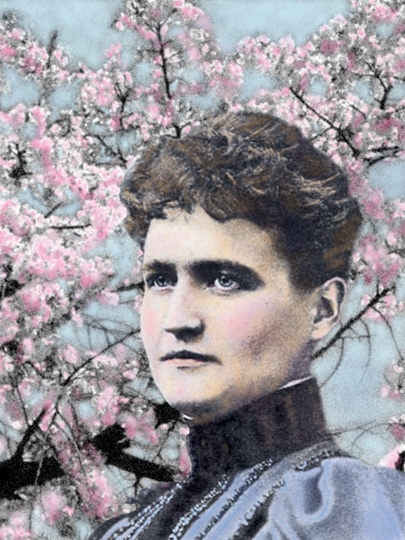Our nation’s capital, Washington D.C., is most known for its historical monuments and is the center of the federal government. However, once springtime hits, many Americans head to the capital for one main attraction, the cherry blossoms. They bloom all around the National Mall, creating a site like no other place. It marks the start of the warm and sunny spring season.

Why Cherry Blossom Trees?
Cherry blossom trees are found throughout East Asia. But are most commonly represented and known in Japanese culture. So how did such pleasant trees end up on the National Mall? The answer all has to relate to a woman named Eliza Ruhamah Scidmore. Born on October 14th, 1856, she was a writer and photographer. Most of her works featured different aspects of Asian culture. Scidmore’s love for Asian culture led her to travel to that continent frequently. This in return, gave Scidmore the idea to bring some of Japan’s culture into her home country, the United States of America. She brought the idea to the U.S. government to bring and plant cherry blossom trees to Washington D.C. It wasn’t until First Lady Helen Taft (Wife of 27th President William Howard Taft) approved the idea. The trees would represent the friendly relations between Japan and the United States. During Scidmore’s career, she would write several books and articles, and even became a member of the National Geographic Society.
From Japan to the United States
After First Lady Helen Taft decided that the cherry blossoms must come to the capital, it was only the question of how the U.S. was going to import the trees. Dr. Jokichi Takamine was a Japanese chemist, and after hearing about the First Lady’s desire, he quickly made an offer of donating some trees as a present from Japan. Tokyo’s mayor at the time, Yukio Ozaki, was on board with the idea and contributed to the present, gifting a generous donation of 2,000 trees. Finally, in 1912 the first cherry blossom trees arrived.
Tree Trouble
Without a doubt, the importing of so many exotic trees can lead to issues. This is proven by several occurrences when more trees arrived in America. After the original 2,000 trees, the Japanese Embassy donated 2,000 more cherry blossom trees. However once arrived, inspection teams found that it was more than just trees that were gifted. The trees carried several unwanted foreign insects and diseases. President Taft gave the order to burn these trees for the health and safety of the ecology of the city of Washington D.C. Several decades later, by 1941, the United States had entered WWll. It’s known that the U.S. entered the war against Japan after the infamous attack at Pearl Harbor. As cherry blossom trees were a symbol of Japan, many people believed it was not appropriate for America’s capital to be home to these trees of the “enemy.” Although the trees were never totally removed, many opted to vandalize the trees.
See the People Enjoying the Cherry Blossoms.
Video Credit: Matthew Chu
A Celebration of Pink
Looking past the trials and tribulations of importing the cherry blossom trees, today the blooming season is considered a popular attraction. The cherry blossoms represent a birth of spring after a long winter and are considered a symbol of optimism. The blossoms are concentrated around the tidal basin near the mall. The iconic photograph of the Thomas Jefferson Memorial in the background of the brilliant trees is a spectacular sight. Around late March to the middle of April is the period when the trees finally start to bloom, and with it comes the hordes of tourists visiting the capital. The very brief blooming season reminds us of the transient nature of life. What makes the site of the trees so special to the people has to be its interesting color. Pink is not often seen in nature, so the bright colors that fill the sky is a joyous site. Every year, a Cherry Blossom Festival is held. See the people cheer in the excitement of the wonders of the colors. Everyone can say that spring is here!

Sources:
Vandalization of the Cherry Trees in 1941
Cover Image:

